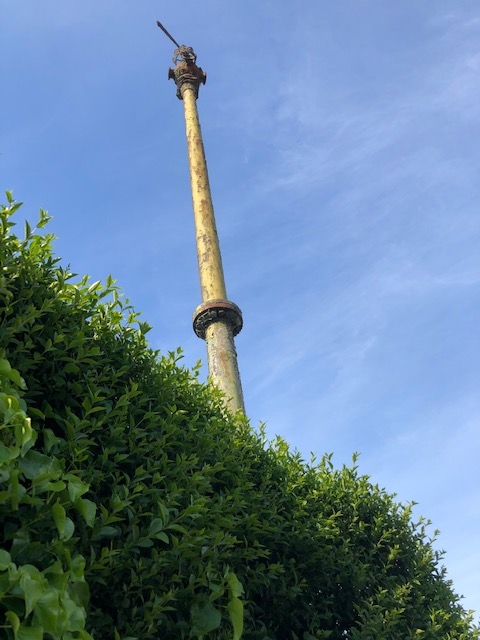
The Secretary of State for Digital, Culture, Media and Sport, advised by Historic England, has added to the National Heritage List for England the historic sewer pipe in Hillcroome Road.
This structure thus becomes the only structure in our Ward to be nationally listed as of historic and architectural significance, so it could only be altered or have work done on it if listed building consent was obtained. There are three other buildings in our Ward that are listed on the Local List of structures of local importance, which provides a lesser degree of protection. These are:
- the Registrar’s office (The Russetings) in Worcester Road, a Victorian house that it is believed the Walls family, famous for Walls ice cream and Walls sausages, lived in, though this is disputed
- Stowford in Brighton Road, a Victorian house, now the Eagle House school
- the pavilion of the Highfield Lawns tennis club at the junction of Mayfield Road and The Ridgway, as an example of an Edwardian tennis pavilion, build by local builder Percy Vere Windebank in 1908

These Drain Pressure Release Pipes, also known as ‘Stink Pipes’, can be seen at various locations within the old Carshalton Urban District Council boundary. They have been listed on the basis of the criterion that they are important to the townscape view.
They were produced by W. Macfarlane & Co. of Glasgow, a prestigous Victorian Ironworks. The company employed imaginative designers and produced huge amounts of ornate and decorative ironwork. The pipes are extremely tall with an ornate top fixture comprising a large arrow, a globe with four trumpetlike funnels and a spike spire piercing a crown. The height and funnels may be to ensure the gas disperses efficiently so as not to inconvenience local residents. It is not known what purpose the arrow has, whether to indicate the direction of sewer flow or act as a weather vane to indicate wind direction.
They serve two purposes, firstly to prevent a build up of pressure in underground sewers in the event of a blockage, and secondly to vent off any hydrogen sulphide gas. This gas, which smells of rotten eggs, can build up when sewage becomes septic, on long runs, or when the speed of the sewage is slow in flat areas. It is extremely corrosive and can eat through the concrete pipes. The sewerage system would have become a necessity after the rapid increases in population and residences in Sutton and Carshalton at the end of the 1800s. Prior to this sewage would have been dispersed into cesspits and drainage ditches, with a risk of contamination of the drinking water supply, contributing to ill health.
The history of W. Macfarlane and Co. and their foundry, the Saracen Foundry, is fascinating. In 1851 Walter Macfarlane (1817-1885) established his company in a disused foundry in Saracen Lane in Gallowgate, Glasgow, and named it Saracen Foundry. It later moved to Washington Street, near the River Clyde. By 1872 his nephew, also named Walter MacFarlane (1853–1932), joined the rapidly expanding company and they relocated to Possilpark, a site of 100 acres on the outskirts of the city. Here a foundry with railway access and a village-styled infrastructure to house the workforce was built. In a decade it housed 10,000 people but the vast iron-founding site caused much pollution. The young MacFarlane made standardisation and good design the key to the company’s successful development. The foundry’s work was used on prestigous developments and widely distributed. During the Second World War Possilpark industrial works was a vast and well-lit target for attack. The recovery of iron to melt down for the war effort also removed much of Saracen’s work. After the war, the collapse of the British Empire, the move away from steam power and the use of new designs and materials led to a vast decline in orders. In 1967 the foundry at Possilpark closed.
